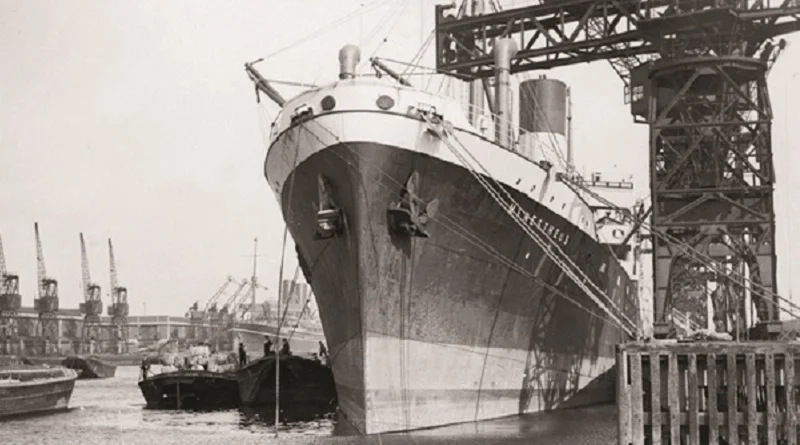The dockyards of London that supplied the empire
The dockyards of London are the bedrock on which its trade and jobs were built. If the Silvertown Tunnel is built, it will create a much stronger link between the Royal Dockyards in South London – from Deptford and out to Greenwich – with the Royal Docks on the north side of the river, which celebrated their centenary this month. TOBY PORTER outlines the history of the northern part, how it fell victim to the biggest explosion in London’s history, and why it helped win two World Wars and a Commonwealth of trade links.
Collisions and piracy were once frequent on the Thames in the early years of Queen Victoria’s reign – a boom time for the British Empire.
A group of entrepreneurs, spearheaded by George Parker Bidder, decided to build docks that were the biggest and deepest in history, on marshland called Land’s End, to ensure London could be supplied for centuries to come.
The project was delivered on time and in 1855, the 13metre deep Victoria Dock was opened. It could hold several of the new large ironclad steamships servicing the empire.
Samuel Silver built his waterproof clothing works in 1852, and gave his name to the Silvertown district.

More wharf space was needed, with railway lines that went straight to the dock edge, refrigerated warehousing to store food –so Albert Dock was opened in 1880. Victoria and Albert Docks became London’s destinations for grain, tobacco, meat, fruit and vegetables.
The staff lived in new homes in new areas called Custom House, Silvertown and West Silvertown.
But it was dangerous work. On January 19, 1917, 50 tonnes of TNT blew up making munitions at the Brunner Mond & Co works in Silvertown.
A total of 73 people were killed, and 70,000 buildings were damaged – it remains the biggest explosion in London’s history.
The final dock was opened by King George V in 1921 – and named King George V Dock. It had a 225metre-long lock with an entrance big enough to accommodate the 35,655 tonne ocean liner the SS Mauretania in 1939.

The poor working and living conditions of dock workers came to a head when a strike was called by the Trade Union Congress for one minute to midnight on May 3, 1926.
There were 750,000 frozen carcasses in the warehouse fridges and no electricity. So the Royal Navy came to the rescue with two submarine generators.
The Royal Docks suffered severe damage during the Second World War. Some 25,000 tonnes of explosives fell on the docklands, both sides of the river.
Human losses were extremely high but the Royal Docks stayed open as British merchant ships were targeted by German U-boats.
The mulberry harbours for the Normandy landings – concrete pontoons which enabled ships to dock at the invasion beachheads – were built in secret at the docks and towed over in 1944.
The Royal Docks enjoyed a brief boom in the late 1940s. But containerised cargo, introduced in the USA in the 1920s, needed much larger ships than could reach the Royal Docks.

The London Docklands Strategic Plan in April 1976 had little impact, and the last vessel to be loaded left on December 7, 1981.
Massive unemployment and social problems followed. In mid-198,1 the London Docklands Development Corporation was formed to regenerate the area.
The Docklands Light Railway and Canary Wharf were built and the former central wharf became the runway of London City Airport in 1987.
ExCel was built in 2000 while a new campus was built on Royal Albert Dock, to become the new University of East London.
And these days, it is homes and office blocks which dominate the skyline – though it remains to be seen how much longer the latter will be needed.
In the meantime, Sadiq Khan has moved London City Hall to the Crystal, on the Royal Victoria Dock, and a series of events are being held in the coming weeks to celebrate the anniversary.
Go to https://www.royaldocks.london/articles/royal-docks-summer-season.
